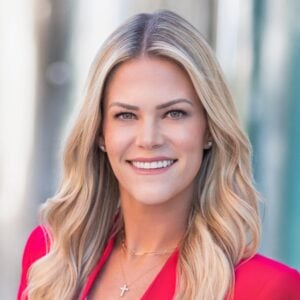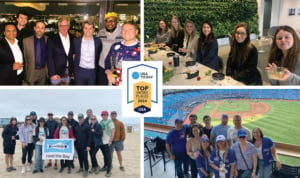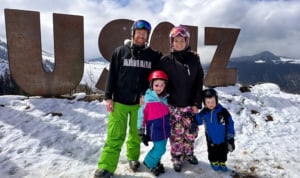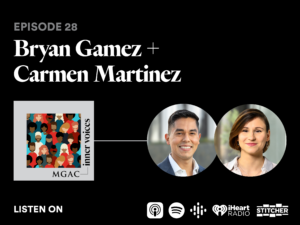MGAC Impacts: Nate Larmore on Bringing Order to Chaos, Working from Home, and a Childhood Dream of Professional Surfing
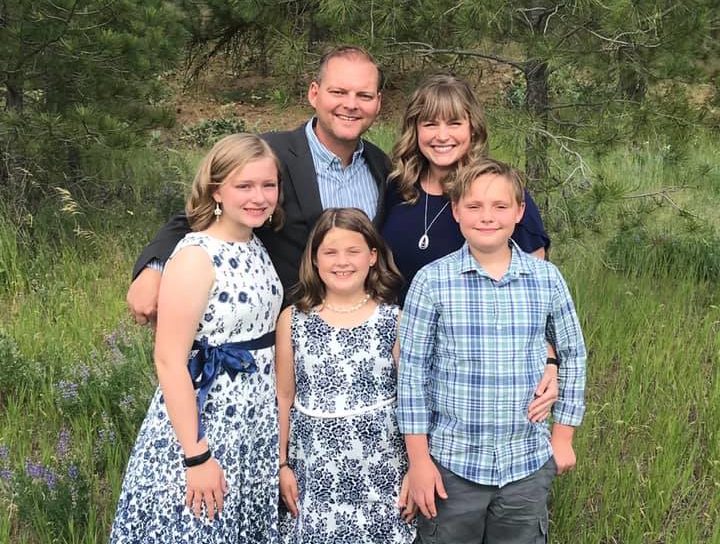
The Impact Blog is a spotlight series that highlights and celebrates the diverse employees that make MGAC tick. Beyond their day-to-day schedules, we want to know how they have a greater impact on their colleagues, their company, and the communities in which they live and work. We want to know what makes them get out of bed in the morning, what led them to their current role, and what they hope their lasting impact will be.
Today, we get to know Nate Larmore, Vice President at MGAC.
—
MGAC: Thanks for taking the time to speak with us today! Let’s start with you walking us through your role at MGAC.
Nate Larmore: Sure. I work in our Technology Solutions group advising clients on all things technology-related, mostly in healthcare. Our clients rely on dozens of systems, and typically, there’s not a lot of continuity in how these technologies are planned, procured, deployed, and operated. Some get managed by one department, some by vendors, with others by another department or third party. There tends to be a lot of confusion and surprise costs until our team comes in. We bring order and predictability to that chaos.
MGAC: What project is taking up most of your time right now?
NL: It’s a balance between several healthcare clients—a large hospital tower in Seattle, a complex ambulatory tower just outside of New York City, and a hospital replacement campus in rural Washington State.
MGAC: Do you typically do a lot of traveling back-and-forth, pre-COVID?
NL: In normal circumstances, I usually travel several times a month—but of course, we’ve all been grounded, so to speak, since the “shelter in place” orders. Fortunately, we’ve got excellent remote meeting tools here at MGAC, so the projects haven’t missed a beat.
MGAC: What brought you to MGAC? What were you doing before you joined our team?
NL: I started out in IT. I evolved into what the industry calls an enterprise architect—engineering how to organize the hundreds of systems so the right data gets to the right place at the right time. Over time, I became an owner’s representative for all a project’s technology systems. I was introduced to MGAC after an old friend came on board and told me about his new role and the Technology Solutions group. The culture, clients, and leadership seemed like it could be a great fit. Even more specifically, the blend of high-performance teams and entrepreneurial spirit that had been cultivated in Technology Solutions sounded really exciting. I was able to join MGAC last Fall.
MGAC: So, growing up, did you have any kind of inkling that you would be doing what you do now?
NL: Oh, no, not at all! I enjoy what I do, but if I could do it all over again, I’d have been a pro surfer.
MGAC: That’s different!
NL: Saltwater is in my veins and the great outdoors is the only place that always makes sense! I grew up on the gorgeous island of Guam. Guam’s a U.S. territory east of the Philippines and south of Japan. My parents and sister still live out there, as a matter of fact. Wearing a suit and tie into the C-suite is great, but board shorts are better! I guess fighter pilot might have been on the list too. After seeing Top Gun as a kid I thought: “That’s what I’ve got to be, I have got to be Maverick.” But time flies, college comes along, then one thing led to another. After finishing undergrad, I got into technology and it’s taken off from there. My mom’s an artist, my dad’s a theologian, and somehow, I ended up an engineer. Who knew?
MGAC: So, that’s a good segue into my next question… How’s the surfing in the Pacific Northwest? Does it even exist?
NL: Ha! Not good. More the point, it’s non-existent. I haven’t lived in the islands for decades, but growing up there, you never get over it and there’s always an urge to go back.
MGAC: I understand that. What’s your favorite on-the-job story or memory?
NL: I think the best part of this job, aside from the fun of solving problems—is there are certain people that you really enjoy working with. What’s kind of unique about this business is it really doesn’t matter where you live, because the work takes us all over the country and overseas too. That dynamic brings interesting people together into some unusual circumstances. There are so many hysterical stories “from the old days” that some of us still talk about when we get together. And these crazy experiences happened all over the world. Somebody will ask, “Remember that project manager that looked and sounded exactly like Morty Seinfeld, Jerry’s dad?” Somebody else will start quoting hilarious one-liners from an old coworker. Or “that crazy time when that plane skidded down the runway in Pohnpei and we were all stranded for weeks…” The people and experiences keep it interesting.
MGAC: What do you find to be the most challenging aspect of your job?
NL: I really enjoy focusing on something for long periods of time and solving it, but sometimes in this business, that’s hard to do. The phone is always ringing; meetings are always popping up. I think that’s part and parcel of the unique work we’re doing—we are bringing order to chaos, and there are times when that chaos jumps in and rattles our orderly world.
MGAC: How do you think the work you do is making an impact in your community?
NL: I’m blessed because most of my work is healthcare-oriented. The work we’re doing serving healthcare clients allows them to better serve their community. Because I’m a dad, the work can really tug at my heartstrings. The work in pediatric environments can be emotional. I’m very blessed that our three kids are in good health, but not every family has that particular advantage. There are many families with children who are going through unbelievably difficult circumstances. So there are times when I’m walking through a children’s hospital or pediatric unit, shadowing caregivers or developing analysis data, that the work becomes intensely personal. It gets emotional when you look past the buildings and the systems, and you see the people who rely on the work we’re doing. It’s very moving. Seeing how our work impacts those in need is a huge motivator to keep striving and help our clients deliver the very best healthcare possible.
MGAC: I imagine that can be very inspiring. What else inspires you about the work?
NL: It’s also fun to share the work with my family. Once while driving from Seattle to San Diego for a family trip, the kids were amazed at how many times I would point to one landmark after another: “Oh, there’s a hospital I worked on, there’s a project I worked on,” city after city. Even now that they’re a little older, they’ll still point out different buildings as “dad’s project.”
MGAC: So, is that what ultimately gives you energy?
NL: Depends on the day, right? But the daily source, and not to get too metaphysical, of my energy and inspiration experience is my faith. I’ve been put here for a reason. I have a purpose. I wake up every morning thinking,“What can I do to fulfill God’s purposes for me?”
MGAC: What about the secret to winding down at the end of a long day?
NL: Well, we’ve got three kids and they clear the mechanism right away. They’re great kids—I bet every parent says that, right? I’m a remote worker, so as soon as I leave my office and walk up the stairs to where everybody else is, it’s an instant shift from work to MarioKart and corny dad jokes.
MGAC: That’s a great point. You’ve been doing this for a while now—working remote—and now, all of a sudden, the whole country is finding themselves in that same remote work situation. Do you have any advice for people who may be reading this to help them achieve a work-life balance?
NL: I can’t claim to have it completely figured out, because it’s a process like everything else. I’ve been working full-time remote for the better part of the last ten years, and prior to that, partly remote for several years. But the greatest challenge I’ve had, and I think most remote workers have, is keeping a healthy work-life balance. You have to develop the right mentality to work full-time from home. But I think the challenge is: if you do have the right personality, it’s really hard to turn it off.
MGAC: That makes sense.
NL: When you enjoy what you do, it feels like a hobby. My wife and kids will pleasantly remind me sometimes: “Dad, it’s the weekend.” And I’m like, “You’re right, you’re right.”
MGAC: I think we’re all guilty of letting our work creep into our free time on occasion.
NL: It’s easy to do, because you’re thinking about it all the time. But the owner of our company, Mark Anderson, speaks to the whole company via Zoom at least once a week, and he’s done a good job of emphasizing this point: make sure to really unplug and take care of yourself. We’ve got to take care of our clients, take care of our company, and take care of ourselves too.
MGAC: I love that.
NL: It really helps to have a dedicated space in your home that’s committed to work. Since I’ve been remote working so long, that work space is fundamental criteria when we’re shopping for a home. An office with a door that closes. As we’re talking right now, I’m sitting at my desk in my office with a particular place for everything. It’s similar to being at an office, I suppose. Having a dedicated space like that is really helpful.
MGAC: That does make a big difference.
NL: During this time when we all feel cooped up, we all need to remember to take some time, whether it’s before work or during the day, to get up and move around. Step outside and get some fresh air, maybe just take a walk around the block. Give yourself a mental break and give your body a break by moving around. Take a little lunch break. If you can, it’s nice to go into another room, even if it’s just for 10-15 minutes. Just get up from your desk now and then. If you’re not intentional, hours will pass and you’ve been glued to your laptop and phone. Move around, your body will be grateful.
MGAC: That’s all very timely advice, considering what everyone is going through right now. Next, I want to move into some rapid-fire questions, so try to answer with the first thing that comes to mind. Sounds good?
NL: Sounds dangerous. Now I’m nervous.
MGAC: Name a book that changed your life.
NL: The Bible is the first thing that comes to mind. I read it every day.
MGAC: How about a favorite quote that inspires you?
NL: “What do you benefit if you gain the whole world but lose your own soul? Is anything worth more than your soul?” That keeps everything in the right perspective.
MGAC: Describe your job in five words or less.
NL: I’m gonna’ have to finger-count this to make sure I’m not going over five words… 2, 3, 4, 5. That fits! “We bring order to chaos.”
MGAC: This may be a little different for you, since you work from home, but what’s your go-to lunch order?
NL: Pre-COVID is a more interesting answer, because here in COVID times, we eat at home constantly. But there is a sandwich joint owned by a local guy nearby, and I tend to go there and get the chipotle cheddar sandwich on a jalapeño bun. You couldn’t do that every day, but that and some Rolaids, to me, is the perfect lunch.
MGAC: What’s the weirdest thing we may find in your desk or work bag?
NL: At this moment, the desk is very tidy and clean. But I can tell you the weirdest thing I’ve ever carried in my work bag.
MGAC: Let’s hear it.
NL: Being an ex-IT guy, and a lot of my coworkers being IT guys, let’s just say we’re not exactly slaves to fashion. At one point I worked with a guy—brilliant, brilliant technical guy with no fashion sense. We had to regularly tell him to dress-up for client meetings. Wear a button-down, put on a jacket, etc. After a while, I bought him and carried around in my bag a clip-on tie for him to use. I’d have it waiting when we’d meet in the lobby to go to meetings.
MGAC: Ha! You’re a good coworker.
NL: We just knew he would never bring a tie. He’d always forget. So, I found a nice, neutral color that I knew would always match whatever he happened to be wearing. It had to be a clip-on, too, because I wasn’t sure he knew how to tie it. And I wasn’t gonna tie it for him.
MGAC: What is the first thing you do at work every day?
NL: Probably look at emails, and that’s because I work with east coast people, so I wake up thinking, “Oh man, they’ve been at it for hours. What’s waiting in my inbox?”
MGAC: What about the last thing?
NL: This may seem kinda’ lame, but right now, as I look at my desk, I’ve got dual monitors and my laptop monitor—and actually, this might be another tip for people who are working from home. But I always put the same things in the same places on the display monitors. Email and calendar are always on the same monitor. Production things are always on the left, anything related to the web is always on the right. I know that’s goofy, but for me, everything is in its place, even digitally.
MGAC: So organized!
NL: Yeah, but at the end of the day—and I’ve actually never even realized this before, until you asked it—I always clear the desk, which means close out all the windows. If there’s anything outstanding, make sure it gets done. And then close out everything. It gives you a sense of completion. There are no screens open anymore, and all I see is my desktop background, which is a picture at Yosemite. It’s a nice way of closing out the mechanism. The work for the day is done, and what’s left on screen is one of the most beautiful places on Earth. It’s the great outdoors, the splendor of creation, the one place where everything always makes sense.
